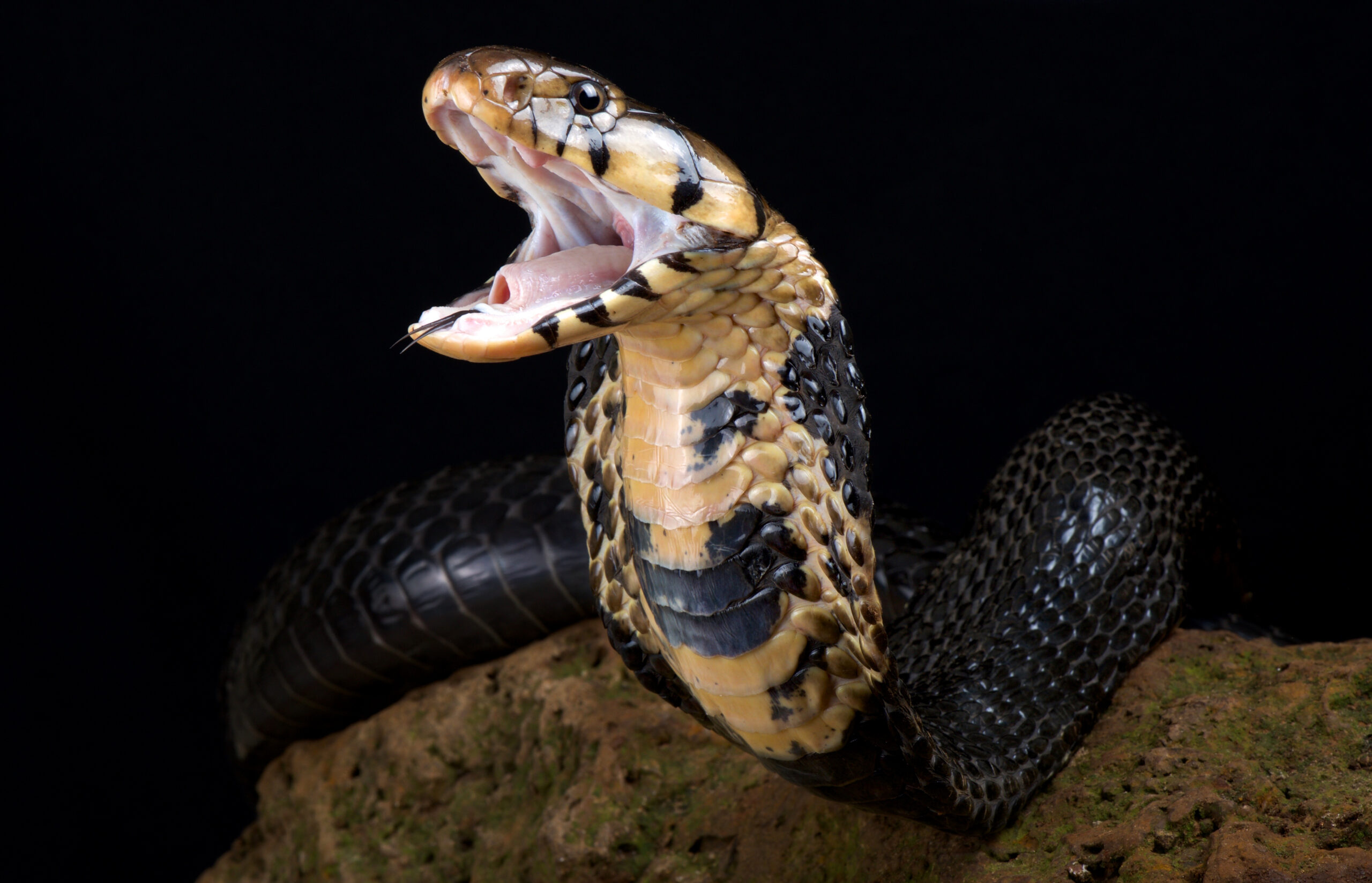What If Pests Could Claim Their Own Taylor Swift Eras? – Part 2
What If Pests Could Claim Their Own Taylor Swift Eras? – Part 2
Welcome to part 2 of our special blog series on which pests would enjoy each of the Taylor Swift eras! If you missed last week’s post, you can read it here to see which pests we think would claim the first five of her eras. Today, we are taking a look at the five most recent eras and determining which common pests would favor each one. For a brief refresher, let’s define a couple of terms within this idea.
Each of Taylor Swift’s eras represents one of her albums for a total of ten unique stages in her music career. They all have their own themes and aesthetics based on the track lists, lyrics, and album photos. Swift’s loyal fans — Swifties — have “claimed” an era for themselves based on how much they relate to the songs and love the general vibes of the era. Now that we are up to speed on this fun practice, let’s take a look at the second half of her eras and find out why certain pests would be so attached to their era.
The Reputation Era – Centipedes

After facing brutal backlash from the general online community over a feud that was thrust upon her, Swift made a major comeback with this album. This was a sharp right turn from her previous release 1989, since reputation has a much darker look and sound. The songs range in topics from finding true love in the midst of chaos to re-claiming her reputation and legacy. With all of the references to isolating herself and having a “bad” reputation, this era would definitely be the favorite of the centipede. These creepy-crawlies know all about having a poor reputation due to how others perceive them, but we would say that theirs is deserved. For one, they are some of the most chilling pests based on looks alone, since house centipedes have 15 pairs of spindly legs and a long segmented body. Another reason for their unfavorable reputation is because they are common invaders of homes, especially when that home has any kind of unaddressed moisture. They would love this era’s general theme of staying out of the spotlight and developing a relationship that becomes a beaming light of hope amidst the bleak darkness. House centipedes are nocturnal and expert hiders, so they can easily sneak up on their prey. They are pretty docile until they are disturbed or “crossed,” which is also very fitting with this era. Reputation has a darker aesthetic that alludes to hiding in the shadows until someone strikes first, as well as working on the art of finding peace in solitude. Centipedes would completely relate to both of these and enjoy every single track on the album. Their favorite song would have to be “Look What You Made Me Do” because they feel the ferocity of the lyrics when they hunt for food, especially when they resort to eating other centipedes, which could also be a case for “I Did Something Bad” but we digress.
The Lover Era – Carpenter Bees

If reputation is Swift’s darkest era, Lover is her brightest. The album cover and aesthetic are full of pastels and lighter hues, and the actual track list is full of an illustrious combination of fluffy love songs, raw reflections on relationship issues, and songs about individuality and womanhood. This era is full of spring and summer vibes that leave fans wanting to play this album on repeat with the windows down on a warm summer day. It is ultimately a celebration of love in every form, and this ethereal era would undoubtedly be the favorite of carpenter bees. These bees are different from honeybees in essentially every way, from their purpose to their appearance to their habitat. Carpenter bees are giant black bees that chew tunnels into natural wood to place their eggs within for protection until the young bees develop. The adult females seek out potential mates in spring, then search for a prime nesting location in which to lay her eggs before the weather is too hot. Carpenter bees only mate once in their lives, so they would definitely relate to the “one true love” theme of Lover. They would love all of the songs about being committed to their partner and enjoying all of the lightweight feelings that come with being in love. Plus, carpenter bees gather pollen and nectar from flowers just like any other bee, so they would also enjoy the era’s aesthetic of blooming flower gardens, soft-hued skies, and springtime. These bees seem like they would already love any object with hearts and flowers on it, so embodying this era would be no problem. As for their favorite song, we are confident that it would be “Cruel Summer” for a couple of reasons. One is that carpenter bees would relate to hiding away with their true love since they build their own hidden homes away from any other bees. The other is that the adult parents die inside their wooden tunnels after laying eggs and giving them bee bread (a mixture of pollen and nectar), which truly makes their summer a cruel one.
The Folklore Era – Grasshoppers

The first of two surprise releases during the pandemic, folklore is a comparatively muted album compared to her previous output. Its track list is full of stories that Swift herself said she hopes is passed down like traditional folklore, and its massive success will likely bring that dream to fruition. There are both personal anecdotes and fictional stories comprising this album, with some of the highlights being a teenage love triangle (with a song from each person’s perspective) and the legacy of the previous owner of Swift’s saltbox house. This era has the general aesthetic of running through a field in late summer, and the pest that would be the most drawn to this era is the grasshopper. The field concept alone would be enough for these insects since that is usually where they are found. They eat anything that comes from a plant, including flowers, leaves, grass, weeds, seeds, and crops. This is why they are such a dreaded pest for every farmer and grower, since a swarm of grasshoppers can devastate a field in no time. But besides the fields, grasshoppers would love the folklore era for its storytelling aspect and softer sound, since these pests are so high-energy that they would feel more balanced with these songs. They would also have a special attachment to the lead single “cardigan” because grasshoppers are known to eat holes in clothing if they get inside a home, so any actual cardigans will not be safe from these pests. The grasshopper’s ultimate favorite song would likely be “august,” not only because of the airy, soul-lifting sounds of the chorus, but also because August is the peak of grasshopper season when they reach their full size. If any insect has an attachment to this month, it would definitely be these summer-loving pests.
The Evermore Era – Mice

As the defined sister album to the previous era, evermore is the winter chill to folklore’s summer sun. This era has a similar feel to its list of songs, in that it is an intricate balance of personal reflections and imaginative character-driven stories. The album has a mature, cold-weather feeling intertwined with its songs, so fans of this era often associate it with thick flannels, burning candles, and a cabin on a cold night. The pest that would adore this era is definitely the mouse. Rodents are problem pests year-round, but they are one of the most common house invaders during the winter months. This is because they seek shelter from the chilly weather in the fall and then build their nests in hidden areas of the home, like behind walls and in the crawl space. Mice would love the evermore era since the general vibes of “telling stories by the fireplace while the snow gently falls outside” would be the rodent’s ideal day. This album also references a lot of family and relationship-oriented stories — especially in “marjorie” and “champagne problems” — and mice are one of the most family-minded pests due to the fact that they reproduce often and care for their young. Mice also prioritize being warm and cozy in their hiding spots, and usually do so by stealing shredded paper and fabric scraps (like flannel) with which to build their nests. These pests naturally gravitate towards the general aesthetic of this album, so it would be a no-brainer for them to claim this era. If they had to choose a favorite song, mice would probably choose “willow.” They would like the message about feeling inevitably drawn to their partner and how some things are truly meant to be, and they would probably extend this message to believe they were meant to invade this home they’re living in (spoiler alert: they weren’t).
The Midnights Era – Fireflies

This era is still less than a year old, but that does not diminish its impact in any way. Midnights has already broken records and charted multiple songs at once, and it is all due to the brutal honesty of these songs that encapsulate all the different types of midnights. For instance, some songs have the feeling of a midnight where you can’t stop reflecting on choices that led you here (“Mastermind”), while others embody the insecurities that seem to consume us as soon as we are alone (“Anti-Hero”). The overall aesthetic of the Midnights era is best described as a velvet blue sky with twinkling stars and a glittering city landscape just below it. And what pest would treasure this exact era more than fireflies? These insects are harmless to humans and are well-known for their shining lights that flash in secret codes to their fellow fireflies. These lights are primarily used to attract a mate, and the speed of the flashing helps female fireflies determine whether or not the male is a fitting mate. It is made possible through specialized organs in the firefly’s abdomen, which combine oxygen and natural chemicals to create a bioluminescent glow. Fireflies would love how this era has plenty of shiny objects and glittery stars throughout the album and music videos. They would also enjoy the range of contemplations in the track list since they are nocturnal and can probably relate to being overwhelmed with thoughts all night long. As much as they would enjoy the deeper tracks, the firefly’s favorite song would likely be “Bejeweled.” They can relate to enjoying a night out with plenty of friends, since they spend all night surrounded by other fireflies. Besides, what firefly wouldn’t love a song all about being the shiniest individual at the party?
Green Pest Services Technicians Are Truly Fearless
Whether you’re in your “finding ants in the cereal box” era or your “can’t go outside without getting attacked by mosquitoes” era, Green Pest Services is here to help! Our team of dedicated technicians have plenty of experience in treating dozens of East Coast pests. We understand how frustrating it is to have your space invaded by countless pests, especially when they have dangerous consequences like contaminating your food or potentially spreading diseases. This is why Green technicians work with the utmost efficiency and care in order to solve each pest problem at hand. Our eco-friendly treatments are completely effective against pests — both in eliminating and preventing — while still being safe for people and pets. We guarantee results and 100% satisfaction every service; if you find any lingering pests after our service, call us and we will return for a free re-treatment as soon as possible. Instead of allowing your pest problems to make this summer slip away like a moment in time, contact us to schedule your initial service with our team today!
***Disclaimer: Section 107 of the United States Copyright Act recognizes “fair use” copywriter content as such: “Notwithstanding the provisions of sections 106 and 106A, the fair use of a copyrighted work, including such use by reproduction in copies or phono-records or by any other means specified by that section, for proposes such as criticism, comment, news reporting, teaching, scholarship, or research, is not an infringement of copyright.” This blog post may contain certain copyrighted works and characters that were not specifically authorized to be used by the copyrighted holder(s), however, the content on this post qualifies as “commentary” on the copyrighted works under the “fair use” doctrine of the U.S. Copyright Act and is thereby protected by federal law. Furthermore, we do not claim any ownership or creative rights of any characters on this list, and all rights outside of the fair use doctrine belong to the respective owner(s).
Citations
Knutson, A. (Dr.). (2003). Grasshoppers: Frequently asked questions. Texas A&M Horticulture Update. Available at https://aggie-hort.tamu.edu/newsletters/hortupdate/hortupdate_archives/2003/jul03/art1jul.html (Accessed on July 18, 2023)
8 Creative Ways to Have a Pest-Free Fourth of July
8 Creative Ways to Have a Pest-Free Fourth of July 8 Creative Ways to Have a Pest-Free Fourth of July Summary: The Fourth [...]
A Simple Guide to Preventing Stinging Pests
A Simple Guide to Preventing Stinging Pests A Simple Guide to Preventing Stinging Pests Summary: Stinging insects are more active in warm weather, [...]
These 10 Natural Mosquito Repellents Can Actually Help
These 10 Natural Mosquito Repellents Can Actually Help These 10 Natural Mosquito Repellents Can Actually Help Summary: Natural mosquito repellents are easier to [...]
How to Get Rid of Carpet Beetles
How to Get Rid of Carpet Beetles How to Get Rid of Carpet Beetles Summary: Carpet beetles are sneaky pests that don’t usually [...]
How Do Roaches Affect Asthma and Allergies?
How Do Roaches Affect Asthma and Allergies? How Do Roaches Affect Asthma and Allergies? Summary: It’s no secret that pests impact human health, [...]
These 5 Carnivorous Pests Might Surprise You!
These 5 Carnivorous Pests Might Surprise You! These 5 Carnivorous Pests Might Surprise You! Summary: There are many eco-friendly ways to prevent pests, [...]

